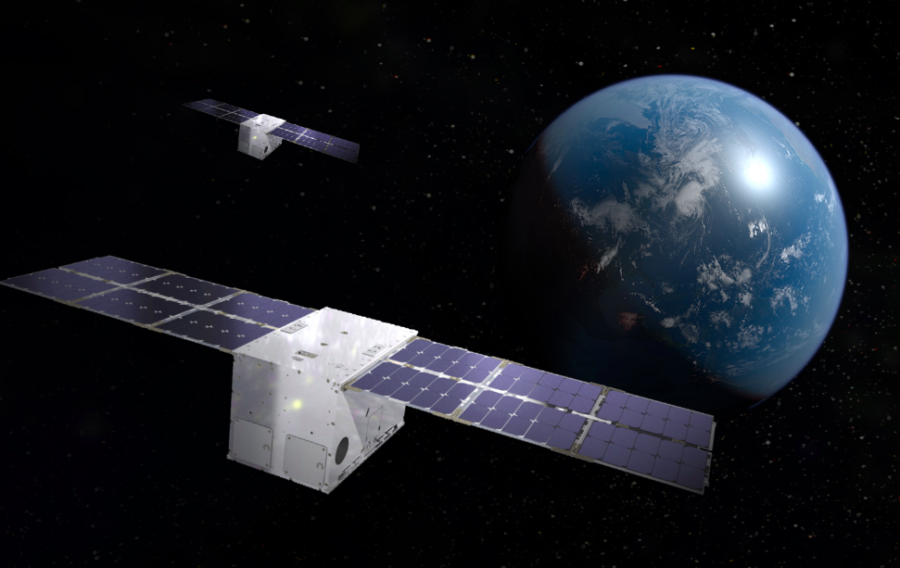
Lockheed Martin’s In-space Upgrade Satellite System (LINUSS) completed environmental testing and is ready for launch later this year, demonstrating how small CubeSats can regularly upgrade satellite constellations to add timely new capabilities and extend spacecraft design lives.
LINUSS is a pair of LM 50 12U CubeSats — each about the size of a four-slice toaster — designed to demonstrate how small satellites can serve an essential role in sustaining critical space architectures in any orbit. Developed using internal funding, LINUSS will be two of the most capable CubeSats in Geosynchronous Earth Orbit (GEO).
“Space is a dynamic domain and our customers are demanding the ability to rapidly upgrade spacecraft on orbit – to provide greater capabilities and more mission flexibility,” said Chris Crawford, vice president of advanced program development for Lockheed Martin Military Space. “LINUSS will be the first step toward flight-qualifying this technology. The ultimate near-term goal is supporting upgradeable LM 2100™ satellite bus platforms, starting with GPS IIIF Space Vehicle 13.”
LINUSS’ mission is to validate essential maneuvering capabilities for Lockheed Martin’s future space upgrade and servicing missions, as well as to showcase miniaturised Space Domain Awareness capabilities. LINUSS also will demonstrate mature new onboard high-performance processing by Innoflight; low-toxicity propulsion by VACCO; and inertial measurement units, machine vision, 3-D printed components and SmartSat™ (transformational on-orbit software upgrade architecture) technologies by Lockheed Martin.
“Given we are well known for our systems integration work on large satellite systems, some people are surprised to learn Lockheed Martin has launched over 150 small satellites since 1997,” said Dr. David J. Barnhart, LINUSS Program Director. “LINUSS has higher bus density, payload accommodation, and on-orbit processing than any other CubeSat, enabling revolutionary mission capabilities in the future. Early customer community feedback has called LINUSS ‘the most capable CubeSat pair off the planet.’”
Part of Lockheed Martin’s LM 50 family of smallsats, both LINUSS spacecraft – measuring roughly 8x8x12 inches – are the collaborative integration of the company’s mission electro-optical payload deck with a next-generation 12U bus from Tyvak Nano-Satellite Systems, a Terran Orbital Company.
Besides LINUSS, some other recent Lockheed Martin smallsat projects include: DARPA’s Mandrake, integration for DARPA’s Blackjack constellation, Pony Express, LunIR and La Jument. In Europe, the company also is involved in developing a 6U nanosat with GomSpace and Orbital Microsystems, as well as supporting the UK’s ambitions to launch smallsats through the UK Spaceflight Programme.
image courtesy of Lockheed Martin
If you would like to join our community and read more articles like this then please click here







